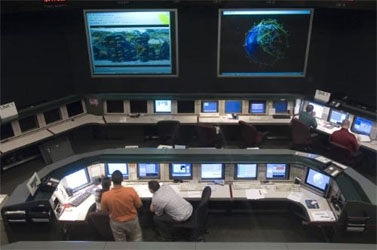Scientists Working to Forecast Weather in Space
The Johns Hopkins University Applied Physics Laboratory (APL), with help from The Boeing Company and Iridium Communications, has implemented a new space-based system to monitor Earth’s space environment.
Known as the Active Magnetosphere and Planetary Electrodynamics Response Experiment (AMPERE), the system provides real-time magnetic field measurements using commercial satellites as part of a new observation network to forecast weather in space.
This is the first step in developing a system that enables 24-hour tracking of Earth’s response to supersonic blasts of plasma ejected from the sun at collection rates fast enough to one day enable forecasters to predict space weather effects, says Iridium.
“This milestone brings us one step closer to accurate space weather forecasts around the Earth,” said APL’s Dr. Brian J. Anderson, principal investigator and the scientist who spearheads the program.
The AMPERE program is funded by a $4 million grant from the National Science Foundation (NSF) to the Johns Hopkins Applied Physics Laboratory. The laboratory, working with Boeing, partnered with Iridium to introduce this new capability by using Iridium’s commercial satellite constellation.
Boeing presently handles data collection, processing and packaging from the Iridium satellite fleet for AMPERE and transfers the magnetic field samples to the Science Data Center at APL (in Laurel, Md.).
Here the data are processed to yield globally integrated views of Earth’s space environment. Leveraging more than nine years of operations and maintenance support to the Iridium satellite fleet, Boeing was able to create a new data pathway for transferring magnetic field samples from the satellites to the ground station – providing the data in real-time and up to 100 times more frequently than before.
So, AMPERE provides data every two to 20 seconds from each Iridium satellite and the data are available within minutes for analysis. Previously, data were only sampled once every three minutes and were available for analysis only the following day.
AMPERE uses Iridium’s network of 66 low-Earth orbiting (LEO) communication satellites, a system capable of providing a global view.
The next step for the APL scientists will be to develop the analytical tools to evaluate and forecast severe geomagnetic storms in space. This phase of the project is on schedule and the first release of AMPERE space weather products to the scientific community is planned for the fourth quarter of 2010.
💛 Support Independent Journalism
If you find RMN News useful, please consider supporting us.




